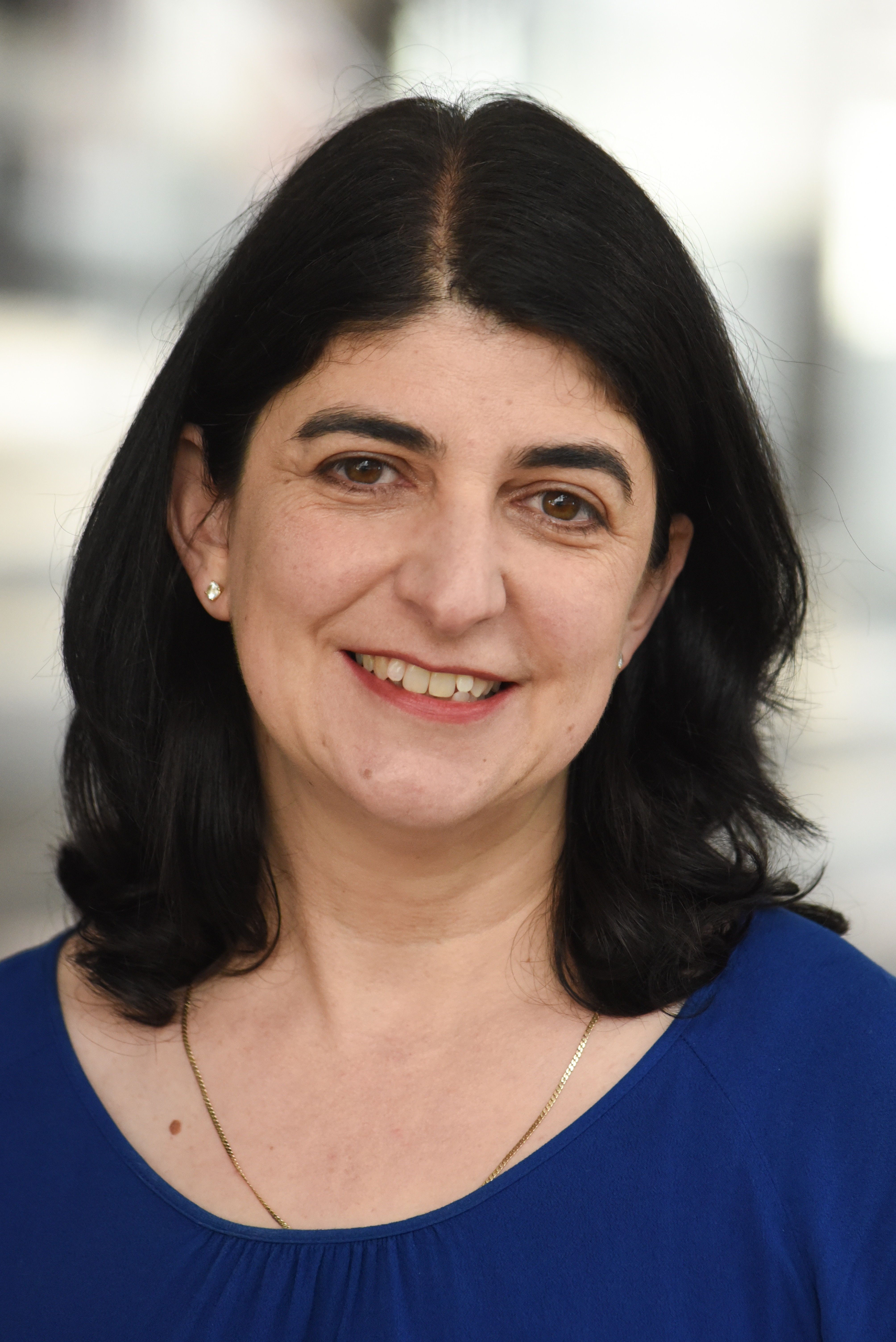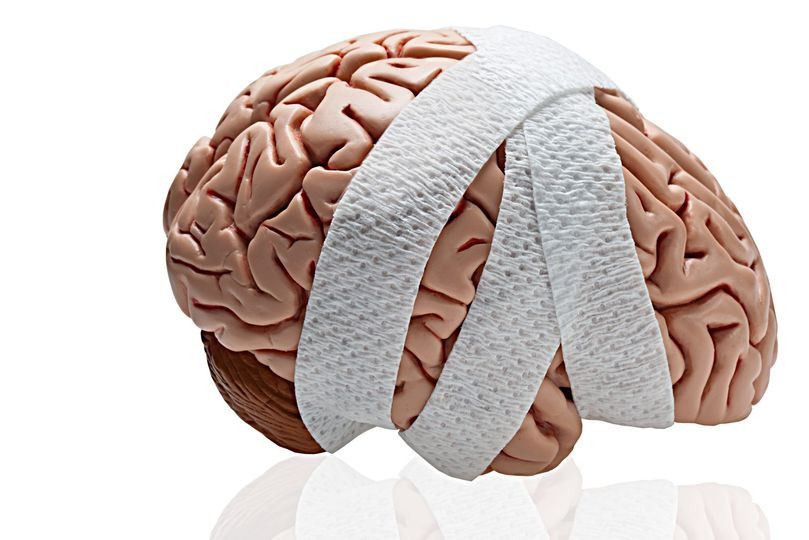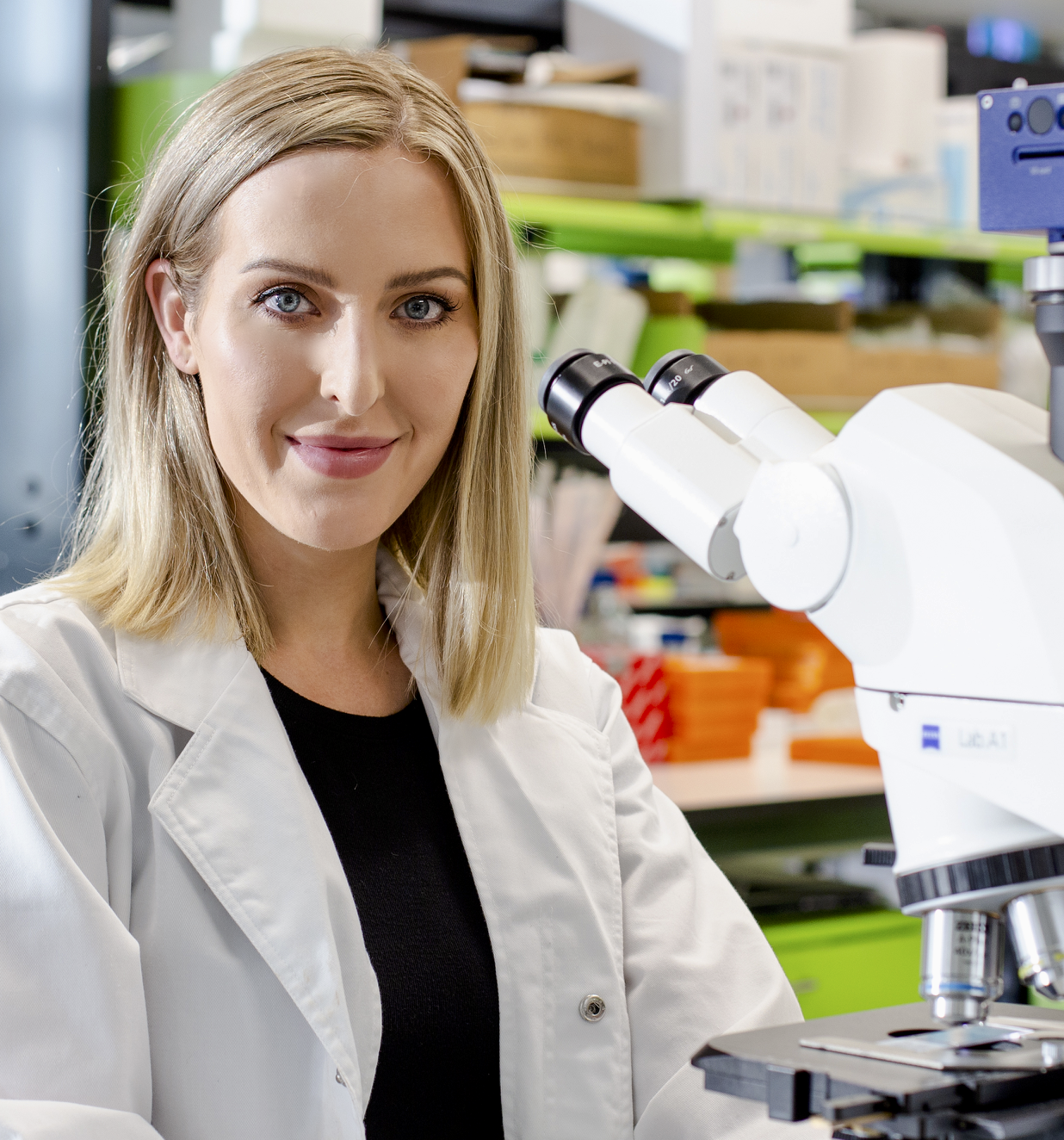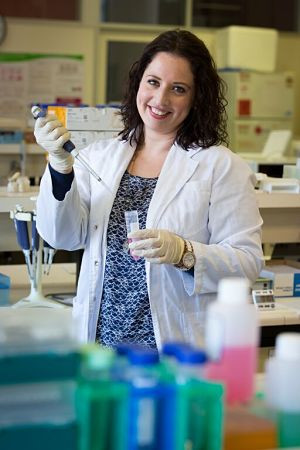Dr Evangeline Mantzioris is the Program Director of the Nutrition and Food Sciences Degree at the University of South Australia. She is an accredited dietitian and Sports Dietitian with vast experience in clinical dietetics, clinical teaching and private practice. She is also an Associate Editor of the Journal, Nutrition and Dietetics.
Here, she shares her thoughts on eating for wellness for brain tumour patients. To hear her speak in person, please attend the NRF Brain Cancer Impact Forum on Tuesday 25th May 2021.
Maintaining a healthy lifestyle during treatment is important, you need to ensure that you are eating a healthy diet, exercising and sleeping well. Eating a healthy well-balanced diet is important as it supplies you with all the nutrients that you need to fight the cancer, support tissue growth and recovery, and maintain your energy levels. It is important that your diet is high in a variety of fruit and vegetable, breads and cereals, dairy and protein foods (including eggs, fish, chicken, meat, pulses, legumes and nuts). Be sure to also include some of your favorite feel-good meals that you enjoy sharing with your family and friends while recovering. There is no evidence to support the use of any type of supplements during treatment, in some cases it could make the prognosis worse. The exception is of course if you are prescribed a supplement by your treating healthcare team.
Eating during treatment can be difficult due to the different side effects of medications and treatment. Speak to your healthcare team and ask them about the potential impact that they may have during treatment. Side effects could include decreased appetite, nausea, bloating constipation or trouble swallowing. You will need to speak to a dietitian if the side effects are impacting on your eating and especially if you are experiencing weight loss.
Eating after recovery
Healthy lifestyles are equally important after recovery, so once again make sure you are exercising, sleeping and eating healthy food. Healthy diets are those that are high in plant foods such as fruit, vegetables, gains, cereals, nuts and legumes. The Australian Guide to Healthy Eating recommends, based on strong evidence, what we should consume for the best optimal health. We need to be eating 5 serves of vegetables, 2 serves of fruit and 5-6 serves of breads, cereals and grains, 3 serves of dairy or equivalents and 2 serves of protein foods. While there have been no direct studies looking at the best types of diets for people that are recovering from brain cancer, we can get hints from other studies that have looked at best diets for cognitive health. What we repeatedly see from the evidence is that diets that are balanced across all the food groups and high in plant foods (fruit, vegetables, nuts, legumes, grains and cereals) with high quality protein foods (beans, legumes, fish, unprocessed meats) and olive oil provide the best outcomes.
One dietary pattern, the Mediterranean Diet has been extensively studied and shown to have excellent cognitive health outcomes as well as reduce the risk of many chronic diseases. The MedDiet is very high in plant foods with only little bit of animal-based food in it. Unprocessed meat is consumed only 2-3 times per week, and processed meats such as ham and salami are rarely or never consumed. Some of the key components of the MedDiet is the use of EVOO (extra virgin olive oil) and lots of leafy greens as well as using sofrito-based recipes. Sofrito is a tomato and onion sauce that is cooked with EVOO, which makes it an ideal basis for cooking vegetables, pasta, rice and small amounts of meta in it, and of course adding herbs and spices that are common in the MedDiet. The MedDiet is also rich in wholegrain cereals (think wholegrain bread and cereals) and nuts and legumes (think lentils, kidney and fava beans as well as nuts).

Dr Lisa Ebert discusses her brain cancer research which she presented at the NRF Researcher Presentations event on Wednesday 23 September 2020.
Dr Reichelt is a Senior Lecturer at the University of Adelaide Medical School.

Dr Reichelt shares insights into her research between obesity and diet and neurodegeneration and traumatic brain injury.
What motivated you to pursue this area of research? What did you study?
Poor nutrition in the form of high fat and sugar diets and obesity are major risk factors for neurodegenerative conditions like Alzheimer’s disease and Parkinson’s disease. My research program revolves around the impact of nutrition and obesity on brain function. Diet is a modifiable lifestyle factor and food is a massive part of our lives - I find that the importance of what we eat and how it affects our brain health is an incredibly exciting field to be in. In a nutshell, my research seeks to understand how poor diets and obesity change cognitive abilities. By understanding what a poor diet does to brain function we can discover new interventions that not only reverse the effects of obesity on the brain, but also identify therapies that can augment brain function in neurodegenerative conditions.
Tell us about this new research project - what are you looking for and why?
An exciting part of my research program has been identifying that obesity can weaken the specialised delicate network of extracellular matrix structures that surrounds neurons – called perineuronal nets. These perineuronal nets form a protective barrier around neurons and can control how often nerve impulses are transmitted between adjoining neurons. If perineuronal nets become compromised, neurons are left vulnerable to injury. So, diet and body composition might be a critical mediating factor that dictates the immediate severity of a TBI on brain function and the long-term road to recovery. This new study will provide cutting-edge insight into the functional and molecular changes that happen to the extracellular matrix and neurons when both an obesogenic diet is consumed, and different severities of traumatic brain injuries – ranging from mild to moderate are sustained.
What do you hope your research will achieve and why?
Modifying the structure of perineuronal nets is an emerging neurosurgical therapy for spinal cord injuries - but this research is further ahead from what we know about the extracellular matrix in the injured brain. Overall, a major aim of my research program is the discovery of effective new approaches and applied therapies that will target the brain’s extracellular matrix to improve cognitive outcomes in brain injuries. I hope that my research will have dramatic positive impacts on people’s wellbeing by identifying effective treatments for TBI and predict recovery outcomes following a brain injury.
What are some of the key statistics regarding TBI and neurodegeneration in Australia?
Alzheimer’s disease is the most common form of dementia, affecting one 1 in 4 people over 85 in Australia, with rarer early onset cases often linked to genetic predispositions. Parkinson’s disease affects 1 in 350 Australians, and mainly affects people over 65, but can have an earlier onset. Following a TBI, you're likely at greatest risk of developing dementia later if you also have other risk factors. These can be genetic, but body composition may also play a key role as obesity causes a low level of inflammation throughout the body and brain – exacerbating neurodegeneration. Long-term studies indicate that obesity in mid-life increases the future risk for the development of dementia by 70-100%. Taken together, the combination of obesity and TBI creates the perfect storm for neurodegenerative diseases.
What is one thing that people do not understand about TBI that you would like to communicate to a broader audience or raise awareness of?
Most patients who sustain a mild TBI (e.g. a concussion) recover normal functionality within 3 months. However, a significant number of patients – between 15-30% - experience persistent dysfunction that can endure for years. I want to identify the biological factors that cause certain people to have bleaker prognoses for recovery, which will then allow tailored therapies for these at-risk individuals.


Dr Anna Leonard is a research active Senior Lecturer in the Discipline of Anatomy and Pathology, Adelaide Medical School (AMS). After completion of her PhD in December 2012 (Dean’s commendation; University Doctoral Medal), she undertook local (UofA; Neil Sachse Foundation Fellowship) and international (University of Alabama at Birmingham, USA) post-doctoral training, gaining research expertise in various animal models of traumatic spinal cord injury (SCI).
In 2016, she returned to Adelaide (RAH ECR Fellowship) to begin establishing a novel porcine model of traumatic spinal cord injury (SCI), a major arm of her research program. In 2017, Dr Leonard was appointed a continuing academic and began further establishing her research within Adelaide. She currently heads the Spinal Cord Injury Research group in the AMS and has established a national profile within the neurotrauma field as an emerging early career researcher.
With 300-400 new cases of SCI in Australia each year, resulting in a financial burden of >$2billion annually and even greater personal loss, there is a real need for research within this field to generate meaningful improved outcomes for people living with SCI.
Dr Leonard's research is focused on understanding the acute outcomes following SCI, particularly surrounding the relationship between oedema, haemorrhage and raised intrathecal pressure (ITP), and the role of neuroinflammation in both acute and chronic outcomes.
Why did you pursue your career in spinal cord injury research?
"In the 3rd year of my undergraduate degree, I was taught by some amazing researchers within the neurotrauma field (Prof Bob Vink & Prof Corinna Van Den Heuvel). Sadly, at the same time a close friend of mine was involved in a car accident, sustained a traumatic brain injury, and died. Studying neurotrauma became hard because it was now deeply personal. However, I was also exposed to the amazing research my lecturers were doing within the field, and it clicked for me that through research I could be involved in developing novel treatments that could potentially save lives.
"I could see the impact research has, and I have never looked back. I feel honoured and privileged to have been involved in the development of a pharmacological treatment that may reduce mortality and improve outcomes after traumatic brain injury early in my career. I hope I can similarly develop something impactful for spinal cord injury through my current research."
Why are you passionate about this – was there something in your life that led you to this specific area?
"Whilst I began my research career within traumatic brain injury, an opportunity to extend my knowledge into traumatic spinal cord injury arose and I could see the need for further research within this field.
"The risk of dying after a traumatic spinal cord injury is comparatively lower than traumatic brain injury, however, this presents its own unique problems. Individuals living with spinal cord injury experience a range of functional deficits, from motor and sensory dysfunction, to bladder, bowel, and sexual dysfunction, as well as more chronic outcomes such as neuropathic pain and cognitive decline.
"This represents a huge impact on an individual’s quality of life and there is a clear need for research focused on improving outcome following spinal cord injury. Throughout my career it is the interactions I have had with people living with spinal cord injury that have both inspired me and provided me with the motivation to keep going."
Please explain your current research – what are you looking at and why?
"I am excited by the variety of my current research. We have projects characterising the acute outcomes following spinal cord injury, specifically tissue swelling and inflammation, and how we could potentially modulate these to improve outcomes.
"The interventions range from pharmacological to surgical and more recently peripheral electrical stimulation. In addition, we have recently started investigating some of the more chronic outcomes experienced by people living with spinal cord injury such as neuropathic pain and cognitive decline.
"These outcomes are complex, and we’re predominantly interested in understanding how the acute injury environment could impact on these delayed outcomes, that often manifest in anatomical regions distant to the site of injury."
What are the current statistics for SCI in Australia?

